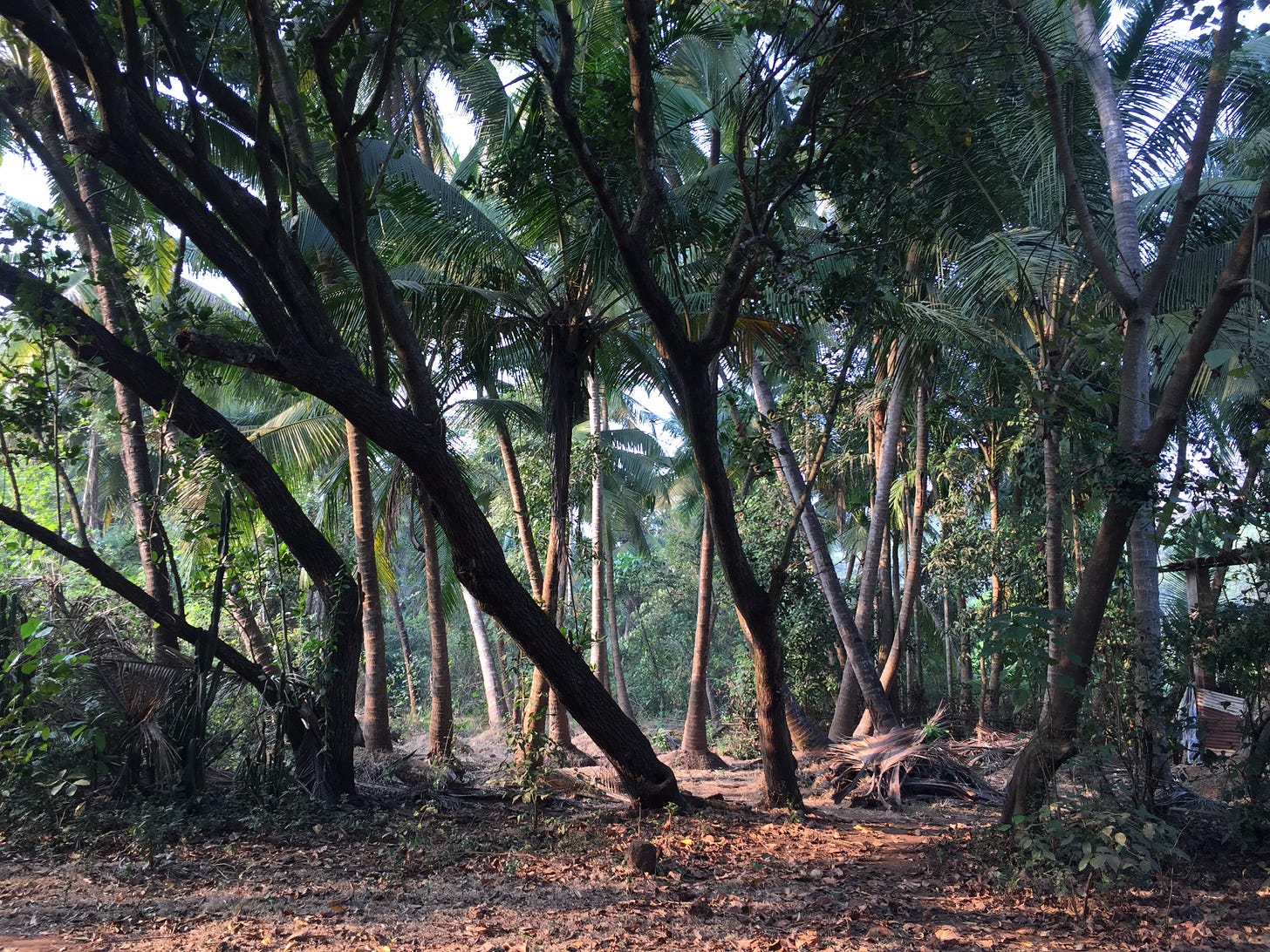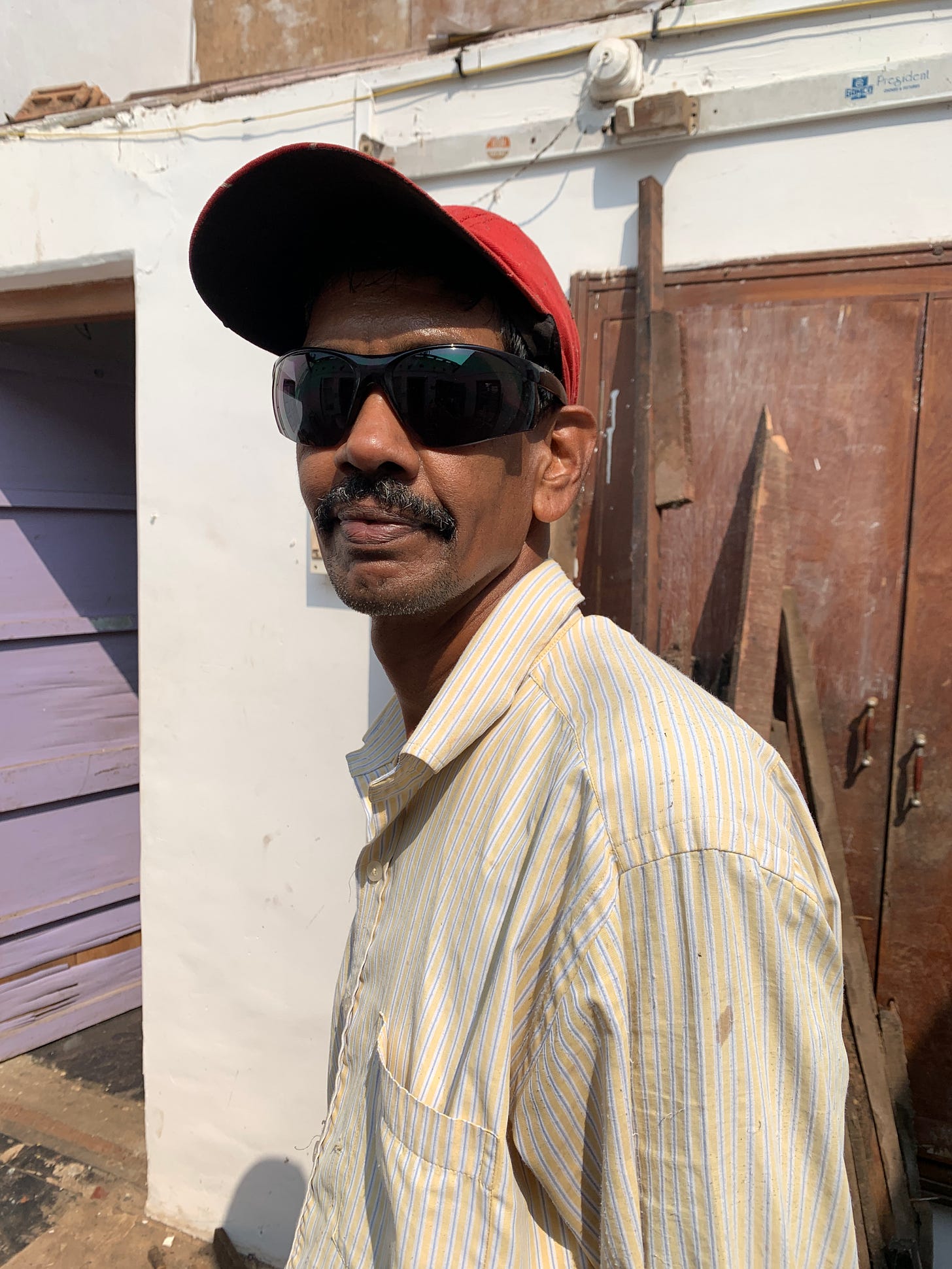Before I start to write about any events, it is important that I establish the characters who play the lead role in this village setup. Like every political party has its star campaigners, every village has its everything person. That person knows almost everything, he can build a fence, dig a well, he’s expert at picking mangoes, he can weave coconut roofs, play a character in the local drama, climb up without any support on a coconut tree, paint and the list is literally endless. In any other part of the world this guy should be a local hero, but in an Indian village there are a couple dozen like him and they never get acknowledged for their skills barring the times when they are needed. Sanju is not a character or just some local who happens to be working with us, he is family. My grandma always says this, “when I am on my deathbed, it will be Sanju who will be the first person to help me or the last person to see me off.” That is quite true though. We all are visitors in this village. The rest of our family lives in Chiplun and Sanju’s family and the old couple who lives next door is the only support system that my grandparents have and vice versa.
From when I can remember being in this village, I have always seen Sanju (and I’ll call him dada, as in elder brother) around our house. He is an integral part the village, but more so, of my family. It wasn’t like this to begin with. Sanju dada, like many other villagers decided to leave for Mumbai in search of a job. He spent his 20’s working first in a hotel and later in a sweet manufacturing plant. Life was harsh. He recalls his days with some animated stories, but I know deep down that he hated being in a city. It was obvious though, village life is different, and strikingly different to a city. Need a snack? Jump up a tree and pick a fruit. Doesn’t matter who owns it, there’s always some room for the hungry. Feeling thirsty? Throw a tin can tied to a rope in the well and there’s enough communal wells to quench ones thirst. Feeling lonely? Grab a cricket ball and there will be atleast a dozen kids waiting for a match. All this is impossible to find in a place where life is extremely individualistic. There are no trees to spread a sheet and take a nap in the afternoon. There are no breaks during work like there are in the village and most importantly work isn’t play in the city.
I know, that sounds ridiculous. But work isn’t play, one might say, but bear me for a second here. Work in a village isn’t really work, it is more of a fun exercise that one does with their friends which are usually his neighbours. Your hands are tied up in weaving something or picking out the skin of some fruit but your mouth is always in a playful mode. You talk about past events, you make fun of each other, you even forget about work for a few minutes and sit down to talk about something serious and everyone is in on it, even the employer. This can never happen in a city where everyone carries a frown on their face and marches with a subtle hint of superiority. How can one be superior in a village. Everyone knows everything that is going on in your house, in your marital life, in your work life, there cannot be a hierarchy. Other than festivals when people dress up and take part in “societal activities”, hierarchy plays a tiny role. This is why, even Mahatma Gandhi was adamant that to truly progress, we must go back to the self-sufficient villages.
Sanju dada was fed up. He didn’t like being shouted upon. He didn’t like the way police treated him when they came to inspect the factory or when he was out on a delivery. Finally my uncle, who was working in a chemical factory by then, intervened. The story goes thus, my uncle went into the factory where Sanju dada worked dressed as an executive from another factory and requested for his transfer while making sure that he got his provident funds in time. The owner wasn’t really nice and later went to jail for some illegal construction activities, and he had held captive many such workers who came from small villages. He’d hold the payments for months, which would make it impossible for these villagers to leave. Money was a new thing after independence and millions of such villagers who came from a lower caste or tribes from all over India didn’t have much of it. The only way left was to end up in a mill or a factory in Mumbai. Sanju dada was finally on his way back to Narvan.
After retirement, my grandparents had decided that they would leave Chiplun and settle down in Narvan and they were in need of someone who would work on the farm. Sanju dada agreed. Soon after returning he got married and settled down in his house. It was helpful in other ways, his mother was ailing and needed a helping hand. Thus started our journey with Sanju dada which goes on even today. He still walks in at 9:30 am looking around at trees, checking for monkeys and makes animated faces when we make an eye contact. He still leaves at 12:30 in the noon takes a nap and walks back in at 2:30. He might be the only guy I know in this village who has no addictions, not even chewing betelnut, which, to be frank, is slowly becoming a rarity. (Let me know in the comments if you dont know what this chewing betelnut is..) He is skilled in almost everything and learns instantaneously, thus he is sought by everyone in the village.
There is a lot of work to be done in a village and without villagers like Sanju dada, none of that work is possible. Thus, Sanju the saviour.
I will begin with - a normal day in Narvan in the next one.
If you like reading this and would like to support me in writing more and undertaking more adventures, you can buy me a coffee via paypal, www.paypal.me/ashutoshjoshistudio
You can buy my first book “Journey to the East”, a memoir about an 1800 km walk through India, through my website .
If you would like to buy prints of my photographs, you can choose the photographs you like on my website and send me an email. I will send you custom quotes for the sizes you’d like.








I live in a village in Malaysia and chewing betel nuts was once a big part of the culture here. The set with betel nut leaf and slake lime was kept in beautiful boxes and offered to guests and even local gods. Nowadays no one chews it except the indigenous people.
I would like to have Sanju as my friend